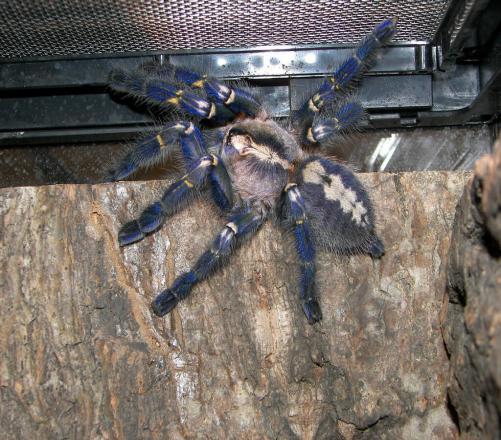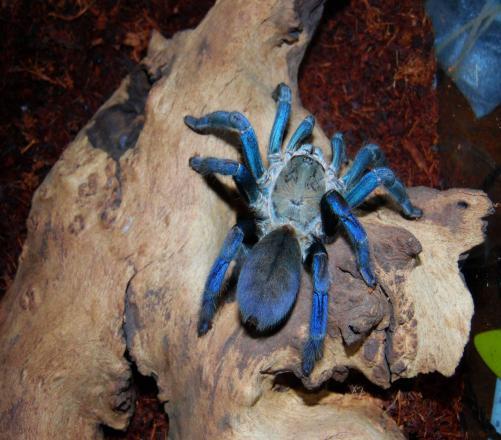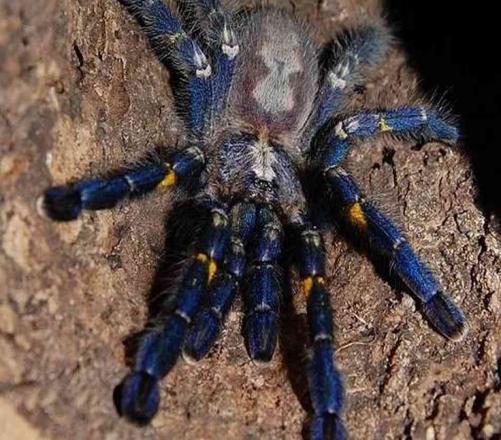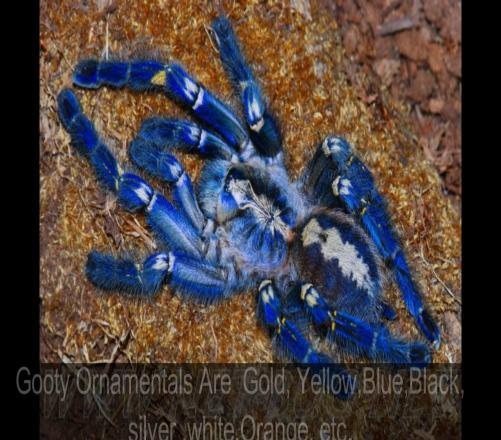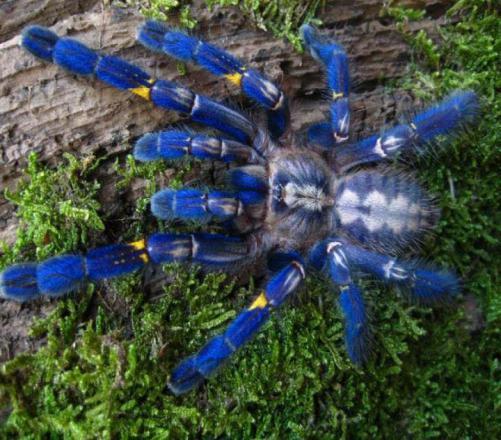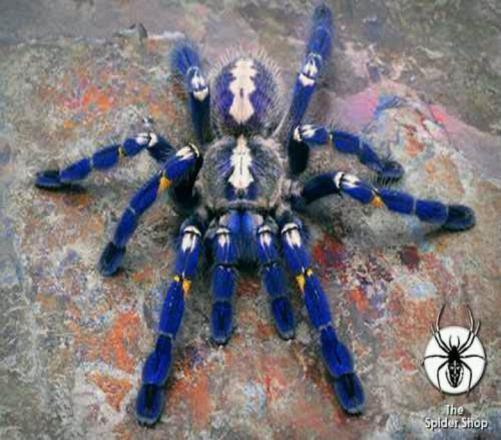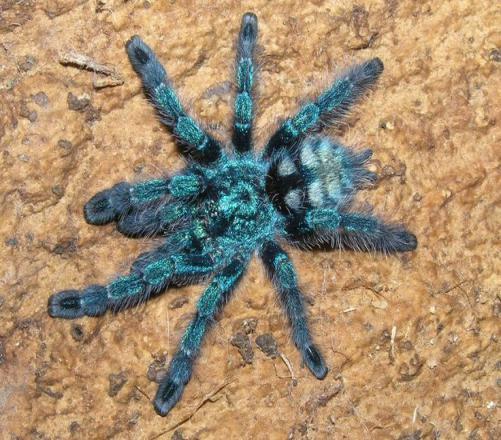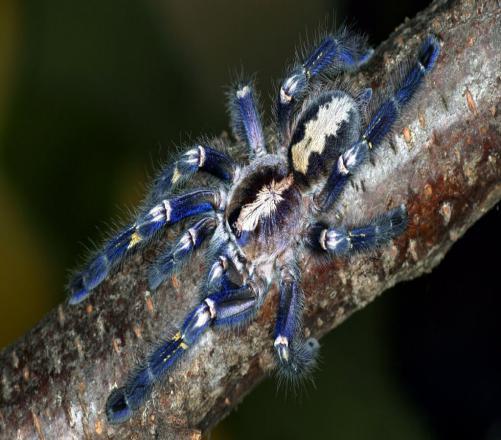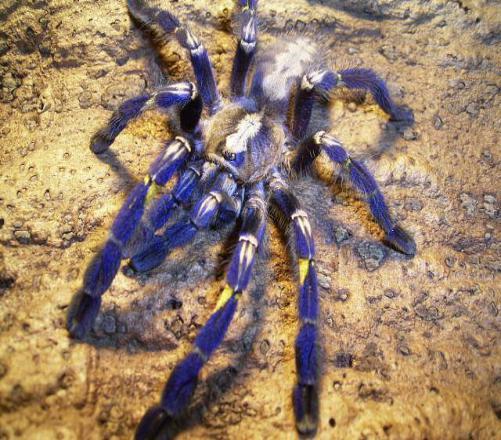What Do You Know About The Gooty Tarantula (Aka Metallic)? Quiz
-
Poecilotheria is the only species in the genus to be covered in?
-
Grey hair
-
Light blue hair
-
Green hair
-
Blue hair
-
Tarantulla is a specie of the Old, called tarantulla, they are only blue specie of the Poecilotheria genus, take a quiz and learn about this specie

Quiz Preview
- 2.
What is their primary prey?
-
Flying Insects
-
Plants
-
Bees
-
None of the above
Correct Answer
A. Flying InsectsExplanation
The primary prey of the subject being discussed is flying insects. This means that flying insects are the main source of food for the subject. Plants and bees are not the primary prey, so they are not the correct answer.Rate this question:
-
- 3.
The type specimen was discovered in a railway timber yard in?
-
Venice
-
Gooty
-
Austria
-
Greenland
Correct Answer
A. GootyExplanation
The correct answer is Gooty. This suggests that the type specimen, which is a particular individual used to describe and define a species, was found in a railway timber yard in Gooty. This implies that Gooty is the location where this specific specimen was discovered.Rate this question:
-
- 4.
What is the life span of the mail species?
-
3 to 7 years
-
1 to 2 years
-
5 to 9 years
-
3 to 4 years
Correct Answer
A. 3 to 4 yearsExplanation
The correct answer is 3 to 4 years. This means that the average lifespan of the mail species is between 3 to 4 years. It is important to note that this is an average and individual mail species may have slightly shorter or longer lifespans.Rate this question:
-
- 5.
The males also have more slender bodies and their legs are?
-
Thinner
-
Shorter
-
Longer
-
Thicker
Correct Answer
A. LongerExplanation
The males have more slender bodies, indicating that their bodies are not as thick as the females. Additionally, the question states that "their legs are?" which implies that the males have longer legs compared to the females. Therefore, the correct answer is "Longer."Rate this question:
-
- 6.
The species’ natural habitat is the deciduous forest in?
-
Pondicherry
-
Telugu
-
Himalaya
-
Andhra Pradesh
Correct Answer
A. Andhra PradeshExplanation
The correct answer is Andhra Pradesh. Andhra Pradesh is known for its deciduous forests, which provide a natural habitat for various species. These forests are characterized by trees that shed their leaves seasonally, creating a diverse and rich ecosystem. The climate and soil conditions in Andhra Pradesh are suitable for the growth and survival of deciduous forest species, making it their natural habitat.Rate this question:
-
- 7.
How is female Tarantula identified?
-
Molt confirmation
-
Skin maturity
-
Body size
-
None of the above
Correct Answer
A. Molt confirmationExplanation
Female Tarantulas can be identified through molt confirmation. Tarantulas shed their exoskeletons, or molt, as they grow. By examining the molted exoskeleton, experts can determine the gender of the tarantula based on specific characteristics. This method is more reliable than relying on body size or skin maturity, as these factors can vary among individuals and may not accurately indicate the gender of a female tarantula.Rate this question:
-
- 8.
Poecilotheria Metallica is found only in a small area of less than
-
50 square kilometers
-
105 square kilometers
-
200 square kilometers
-
100 square kilometers
Correct Answer
A. 100 square kilometersExplanation
The correct answer is 100 square kilometers. This means that Poecilotheria Metallica is only found in a small area that measures 100 square kilometers.Rate this question:
-
- 9.
Poecilotheria Metallica lives in holes of tall trees making
-
Burrow
-
Webs
-
Hole
-
Funnel Webs
Correct Answer
A. Funnel WebsExplanation
Poecilotheria Metallica is a species of tarantula that is known for living in the holes of tall trees. These tarantulas create funnel-shaped webs in order to catch their prey. The funnel webs are strategically designed to guide the prey towards the tarantula, making it easier for them to capture their food. Therefore, the correct answer is "Funnel Webs".Rate this question:
-
- 10.
What is the full size of Tarantula Metallica's leg span?
-
6 to 9 inches
-
7 to 9 inches
-
6 to 8 inches
-
None of the above
Correct Answer
A. 6 to 8 inchesExplanation
The correct answer is 6 to 8 inches. Tarantula Metallica's leg span is typically between 6 to 8 inches, which means that the length from one leg to another can range from 6 to 8 inches. This size range is specific to Tarantula Metallica and does not include any other measurements mentioned in the options.Rate this question:
-
Quiz Review Timeline (Updated): Mar 20, 2023 +
Our quizzes are rigorously reviewed, monitored and continuously updated by our expert board to maintain accuracy, relevance, and timeliness.
-
Current Version
-
Mar 20, 2023Quiz Edited by
ProProfs Editorial Team -
Jan 10, 2018Quiz Created by
Jaksiboy
Endoplasmic Reticulum Quiz: Test Your Cell Biology Knowledge!
The Endoplasmic Reticulum Quiz is designed to challenge and expand your knowledge of one of the most important organelles in eukaryotic cells. This quiz covers the structure,...
Questions:
15 |
Attempts:
31 |
Last updated:
Jun 09, 2025
|
Celebrating Diversity: The Darwin Day Quiz Challenge
Embark on an intellectual journey with the 'Darwin Day Quiz Challenge' and celebrate diversity in the world of science! This quiz, centered around the revolutionary Darwin...
Questions:
15 |
Attempts:
41 |
Last updated:
Feb 01, 2024
|
Can You Solve The Mysteries Of Synthetic Biology?
Step into an intellectual journey that will take you through the fascinating domain of Synthetic Biology. This quiz is designed for enthusiasts, students, and professionals eager...
Questions:
10 |
Attempts:
50 |
Last updated:
Jan 30, 2024
|
Lost Legacies: A Quiz On Extinct Species
Embark on a journey through time with "Lost Legacies: A Quiz on Extinct Species." This quiz invites you to delve into the fascinating world of creatures that once roamed...
Questions:
15 |
Attempts:
153 |
Last updated:
Nov 17, 2023
|
Quiz: Can You Keep Up With The Population Variation?
Welcome to the "Can You Keep Up with the Population Variation?" quiz! Embark on a journey into the captivating world of genetic diversity. Test your understanding of...
Questions:
10 |
Attempts:
87 |
Last updated:
Aug 14, 2023
|
Test Your Knowledge On Uncovering The History Of Evolutionary Thought: 2.05 Quiz
Welcome to the "Evolutionary Thought" quiz! Journey through the history of scientific exploration as we delve into the fascinating world of evolutionary theories. This...
Questions:
10 |
Attempts:
91 |
Last updated:
Aug 09, 2023
|
 Back to top
Back to top



